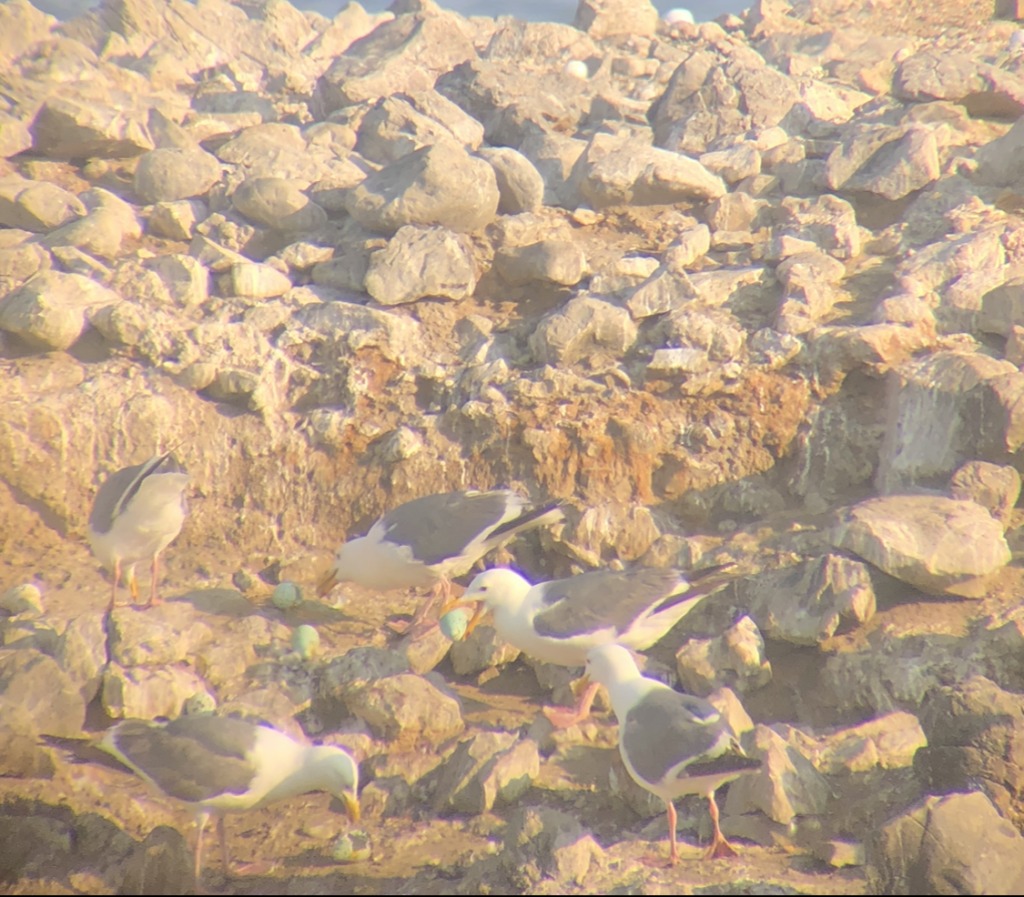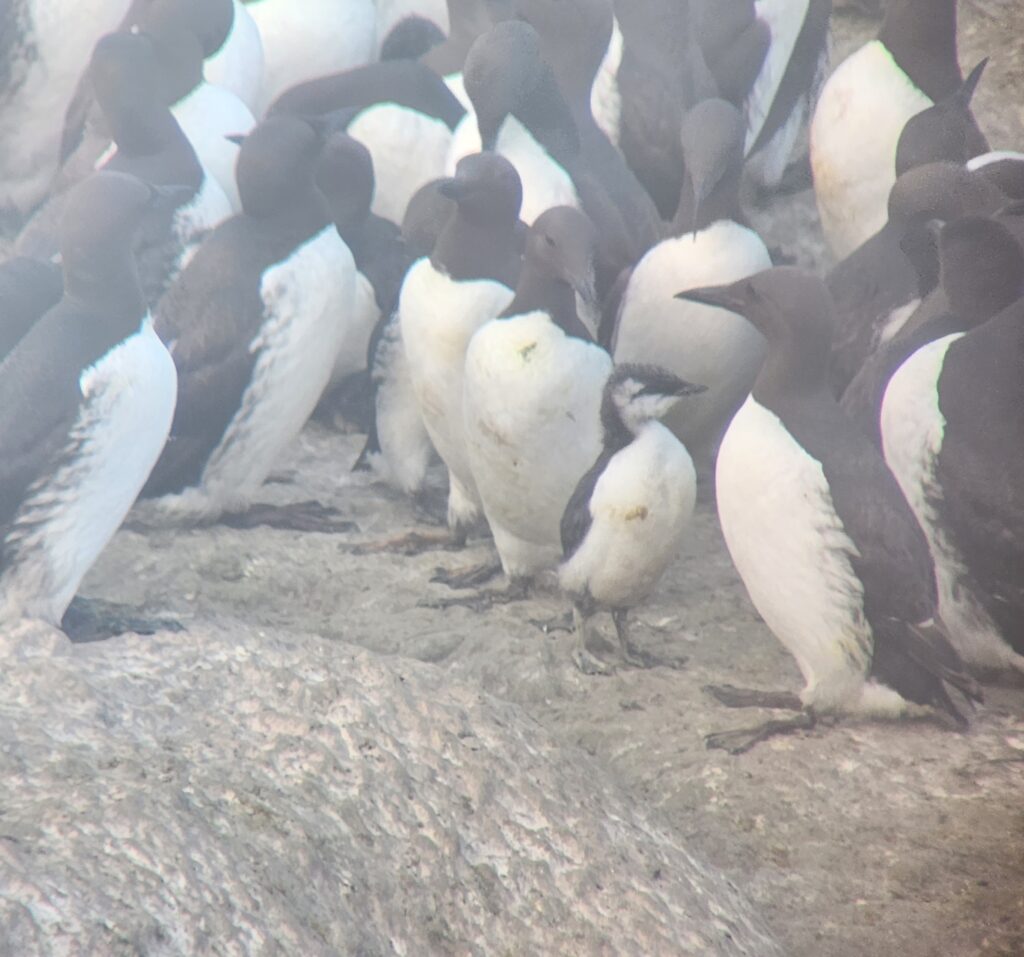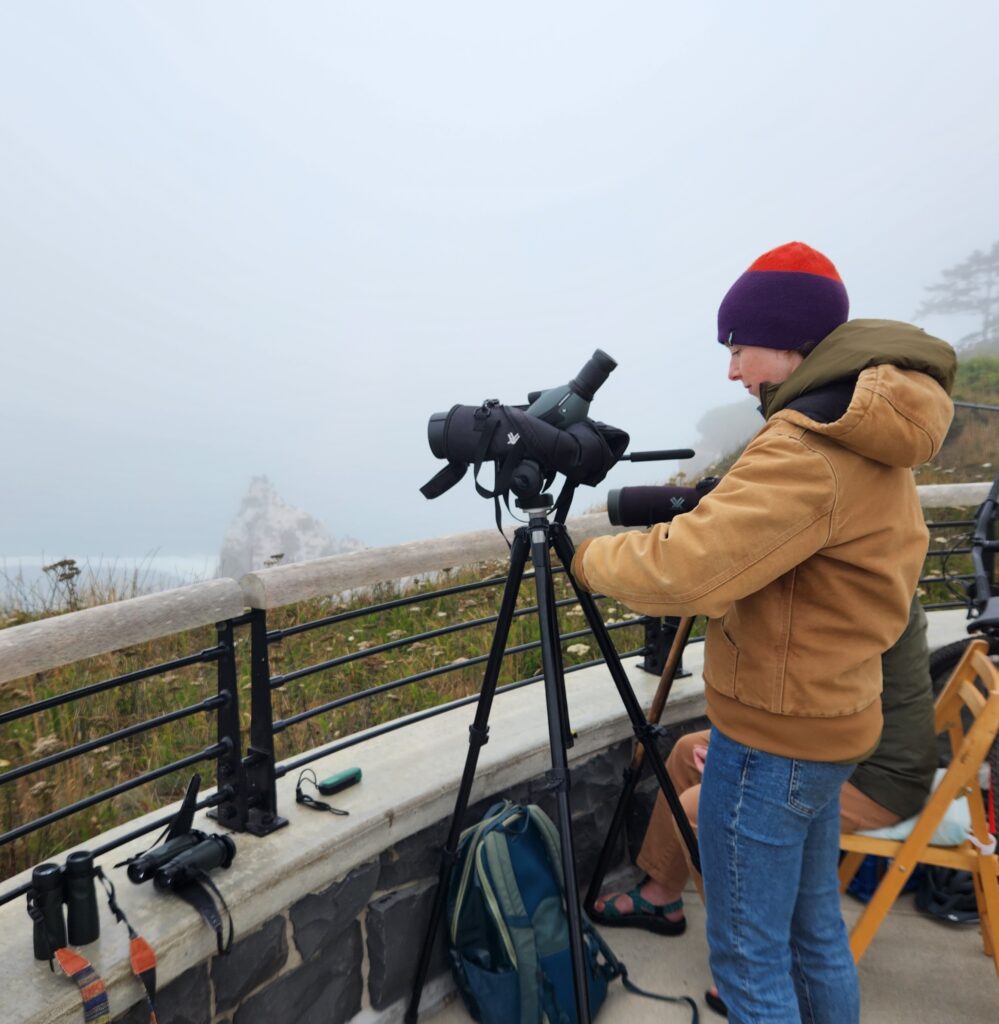Hello Everybody!
My name is Ricardo Rodriguez, I am the Education and Outreach intern at Yaquina Head Outstanding Natural Area through Environment for the Americas. I recently graduated from the University of California, Merced with a Bachelor’s degree in Biological Sciences. I am assisting Oregon State University’s Seabird Oceanography Lab’s research efforts to monitor the reproductive success of the Common Murres (Uria aalge), Brandt’s Cormorants (Urile penicillatus), and Pelagic Cormorants (Urile pelagicus). I have experience conducting avian point count surveys of urban songbirds in Northeast Los Angeles as a Community Climate Action Corps Fellow, but this my first taste of bird monitoring and nest tracking in my early career. I am very grateful for this opportunity to contribute to this long-term monitoring effort.
Per usual, the Common Murres have had a rocky season on Colony Rock. There were many eggs that were eaten or dropped by Western Gulls (Larus occidentalis) when the voracious Bald Eagles (Haliaeetus leucocephalus) would hunt for Murres. It has been very unfortunate seeing broken Murre eggs along Yaquina Head. Between the first monitored murre egg (June 12th) and our last recorded eagle disturbance (July 17th), we recorded more than 1.1 eagle disturbances per hour of observation and directly witnessed 73 eggs consumed by eagles and gulls during these events. Eagle disturbances and predation of the Murres has have slowed down significantly since the middle of July, thankfully, thus allowing Murres to incubate any eggs that have not been destroyed .

Both adults of a Common Murre breeding pair incubate the egg. The incubation period can take anywhere from 28 to 37 days. The first Murre chick was observed on July 19, 2023 on Seal Rock and this year is likely the latest median hatch date we’ve ever recorded (peak hatch this year was between July 28th and August 7th). 2018 was the previous record for latest median hatch date (~July 15th) at Yaquina Head, so the delay caused by predator disturbance this year was quite significant. As many as 26 Murre chicks have been recorded in our monitoring plots at Colony Rock alone, and we are hopeful to see many more on the other offshore islands that we have been observing.

Adult Murres have been observed and photographed to bring their chicks lots of Smelt (Osmeridae) and Herring (Clupeidae ). We’ve also conducted our first of multiple dawn-to-dusk provisioning watches by which we estimate the rate at which adult murres provision their chicks. We hope to fit in two more of these watches before weekly until more chicks fledge. Some chicks have already fledged and their calls can sometimes be heard from the headland. I have worked at Yaquina Head since the beginning of April; I have clearly seen less and less Murres attending the colony compared to the amount back in May.

We are nearing the end of our Pelagic and Brandt’s Cormorant monitoring efforts at Yaquina Head Following a total of 55 nests across the two species, we estimated that Pelagic and Brandt’s Cormorants fledged an average of 2.8 and 2.4 chicks per nest, respectively. All in all, we estimated that more than 80% of all cormorant chicks that hatched eventually went on to fledge, among the highest we’ve recorded in the 16 years we’ve been monitoring cormorant productivity.
It has been an absolute pleasure working with an amazing team of researchers. Come visit us out at Yaquina Head!
— Ricky, Neci, Jacque, Mariam, and Will

